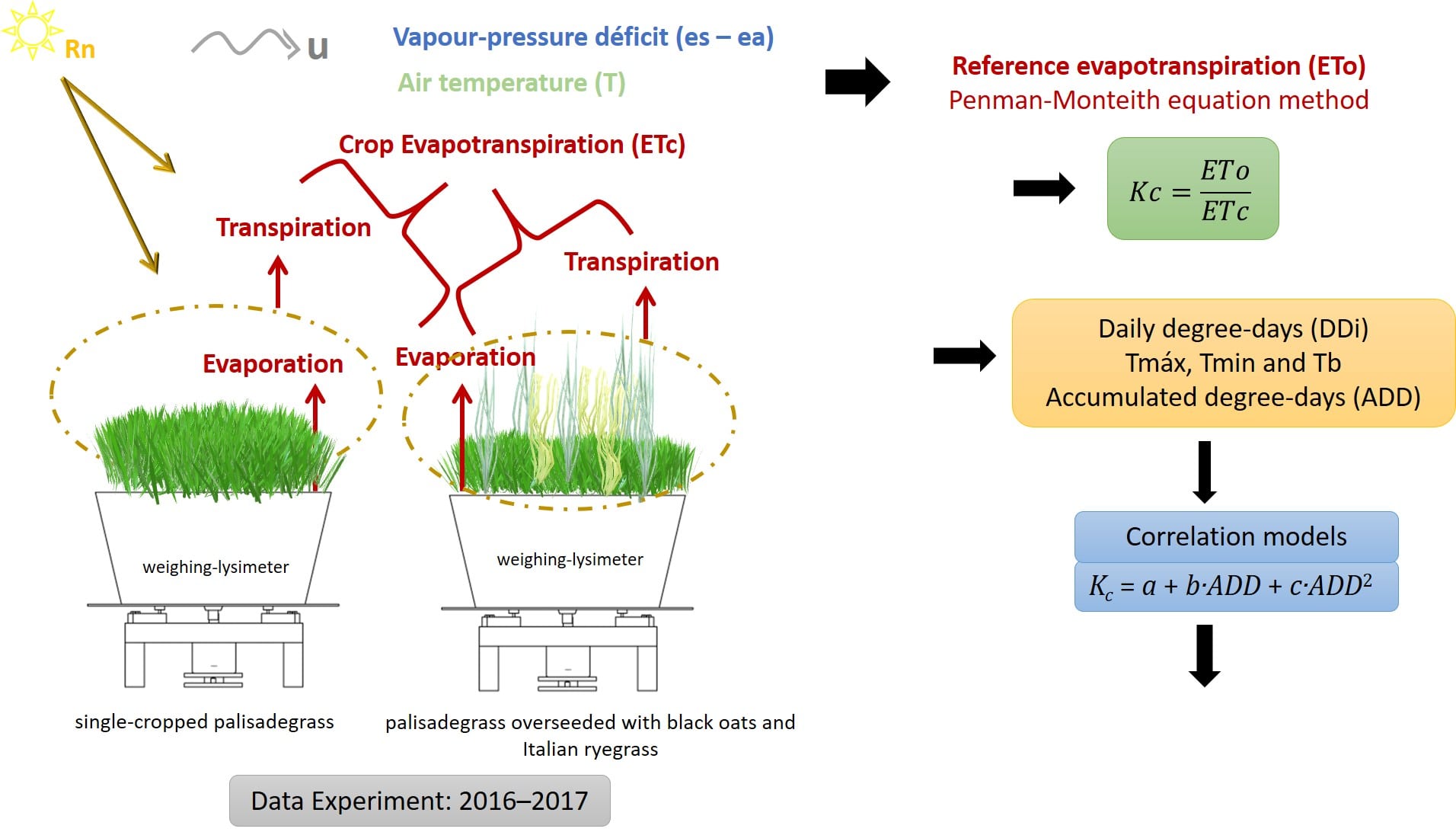Crop coefficient estimated by degree-days for ‘Marandu’ palisadegrass and mixed forage
DOI:
https://doi.org/10.48162/rev.39.041Palabras clave:
pasto Marandu, evapotranspiración, consumo de agua, forrajeResumen
Considering profitability in pasture-based systems, investigating parameters affecting crop coefficients for irrigation management becomes important. In this experiment, we determined the crop coefficient of ‘Marandu’ palisadegrass based on accumulated degree-days and estimated plant water consumption under single (‘Marandu’ alisadegrass) and mixed (‘Marandu’ palisadegrass + black oats + Italian ryegrass) cropping regimes. The research was conducted at the Luiz de Queiroz College of Agriculture in Piracicaba, São Paulo, Brazil, between 2016 and 2017. Evapotranspiration was assessed using weighing lysimeters while crop evapotranspiration was calculated using mean weight variation. Reference evapotranspiration and degree-days were estimated. Data were obtained from an automated weather station. Equations and regression models relating crop coefficient with accumulated degree-days were generated for two seasons (spring/summer and autumn/winter) and evaluated for two year-cycles, from 2015 to 2018. The results showed better prediction accuracy for the single cropping system in spring/summer 2017–18.
Highlights
- The model for determinating crop coefficient (Kc) by accumulated degree-days showed efficient for use in determination local.
- The use of the degree days for determination Kc is more vantage because only necessary to measure the air temperature (maximum and minimum).
- The equations for determining crop coefficient by accumulated degree days for the spring/summer season in Marandu palisade grass cultive show more precision that in mixture forage system.

Descargas
Publicado
Número
Sección
Licencia
Derechos de autor 2018 Revista de la Facultad de Ciencias Agrarias UNCuyo

Esta obra está bajo una licencia internacional Creative Commons Reconocimiento-NoComercial-CompartirIgual 3.0.
Aquellos autores/as que tengan publicaciones con esta revista, aceptan las Políticas Editoriales.



